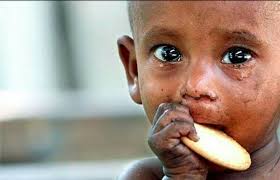 Satya Narayan Misra in Bhubaneswar, August 6, 2022: The gender gap index report is being brought out since 2006 by the world economic forum to highlight to what extent there is gender discrepancy in terms of economic participation, education, health and survival and political empowerment between men and women.
Satya Narayan Misra in Bhubaneswar, August 6, 2022: The gender gap index report is being brought out since 2006 by the world economic forum to highlight to what extent there is gender discrepancy in terms of economic participation, education, health and survival and political empowerment between men and women.
In the context of India, it has placed India at 135th out of out of 146 countries with a minuscule improvement of 0.3 % over last year’s overall performance. The good news is that India has done well in terms of political empowerment with 48th position whereas countries like china are in the 120th place.
This is largely due to the fact that 33% is reserved for women in the state legislature and some states like Odisha earmark 50% reservation for women. The report shows a contradiction between improved social empowerment of women and their abysmal health status in India.
This is also corroborated by the latest NFHS V survey (2019-21) which brings out that around 57% of adolescent girls/women in the age group of 15-49 are highly vulnerable to anemia contributing further to high percentage of low birth weight babies, Infant Mortality Rate (IMR) and Maternal Mortality Rate (MMR).
As India launches into celebration of its 75th anniversary of independence, the NFHS report brings out how the percentage of anemia on an all India basis has increased from 53% (2015-16) to 57% in 2019-21.
The situation is particularly disconcerting in poor states like Bihar (63.5%) and Odisha (64.3%) and 65% in an economically developed state like Gujarat. On the other hand, Kerala shows anemia percentage of 36.3%. This has a chain impact on IMR, MMR and low birth weight babies.
 In Bihar, Odisha and Gujarat, the IMR is as high as 46.8%, 36.3% and 31.2% respectively, whereas in Kerala it is 4.4 only. The NITI Ayog latest report on multi-dimensional poverty shows that the deprivation of maternal health is around 45.6% in Bihar as against 1.7% in Kerala.
In Bihar, Odisha and Gujarat, the IMR is as high as 46.8%, 36.3% and 31.2% respectively, whereas in Kerala it is 4.4 only. The NITI Ayog latest report on multi-dimensional poverty shows that the deprivation of maternal health is around 45.6% in Bihar as against 1.7% in Kerala.
But the most disconcerting evidence of this health vulnerability is due to poor nutrition where Bihar shows a deprivation of 51.6%, Odisha 37.2% and Kerala 15.2%. This is despite the fact that the government of India has launched several initiatives since 1975 to contain the problem of anemia amongst children and pregnant and nursing mothers.
The ICDS program unveiled in 1975 created 14 lakh anganwadi centers with 22 lakh workers to provide supplementary nutrition like protein, vitamin A, IFA and deworming medicines in periodic intervals so that these vulnerable section of society provide demographic dividend to the country.
However, there has been no containment in the proliferation of anemia barring states like Kerala. The National Iron Plus initiative was launched in 2013 which set a target of reducing anemia percentage by 18% by 2022. However, the data would show the reduction during 2005-15 has been only 2%.
In fact, after 2015 it has increased by 4% in an all India basis, with practically no state reducing the anemia percentage including the state of Kerala. The Poshan Abhiyan was therefore launched by the Prime Minister Narendra Modi in 2018 to reduce anemia amongst adolescent girls by 3% per year as against no decrease in the past. The NFHS V report so far shows that none of the state has been able to achieve the target.
While there is a lot of rhetoric like using technology to connect all stake holders, promoting awareness through Jan Andolan, what is germane to this lagging problem is the issue of poor supply chain management.
As per the NFHS report the deprivation in Vitamin A, IFA, and deworming for females is as high as 54%, 86% and 72% respectively. The deprivation is particularly very for poor girl children where the deficiency in intake of vitamin A, IFA and deworming is as high as 62%, 92% and 76% respectively.
This leads to the question as to why the existing supply chain management is not able to meet the timely provision of the supplements to the adolescent girls and women. In an interesting study in UP project UMANG was launched in 2003 amongst school children and it was found that between 2003-06 anemia went down from 73% to 25%.
Interestingly 80% of the beneficiaries regularly consumed the supplement and the additional per head cost was found to be only 0.36 dollars. This experiment very clearly shows that a vigilant program with empathetic stakeholders can significantly reduce anemia in a time bound manner.
Technology can play a very important role connecting different stakeholder and providing timely information so that the supply chain is monitored regularly and the supplements are availed by the intended beneficiaries regularly.
 The World Bank has calculated the cost of fewer developing countries due to deficiency of Vitamin A, Iodine and Iron is about 5% of the GDP. It also causes disability, premature death and reduced productivity. In adolescent girls’ iron requirement increases by two fold to meet the loss of iron from the body with the onset of menstruation. Traditional diet is not able to make good the loss of blood.
The World Bank has calculated the cost of fewer developing countries due to deficiency of Vitamin A, Iodine and Iron is about 5% of the GDP. It also causes disability, premature death and reduced productivity. In adolescent girls’ iron requirement increases by two fold to meet the loss of iron from the body with the onset of menstruation. Traditional diet is not able to make good the loss of blood.
Therefore, IFA supplementation is critical to reduce anemia amongst girl in the reproductive age group. The intervention required would be three fold. India has 20-30% under nutrition in first 6 months of a child when exclusive breast feed is the only nourishment required.
The evidence from the technology alternatives for rural area (CTARA), IIT Mumbai indicates that well planned breast feeding council given to pregnant women during prenatal checkup and in follow up home visit makes a significant difference.
The study brings out through such intention the under nourishment prevalence rate was reduced by 66%. Complementary feeding practices from 6 months onward also show that even 20% in higher socio-economic groups are stunted because of poor knowledge in food selection and feeding practices.
Creating awareness at the right time regarding special care to be taken in first 1000 days be it poor, middle class or richer sections of the society deserves highest priority. There is also a necessity to revisit the nodal system for providing nutrition through the Anganwadi system which has been existing since 1975.
 Quite clearly seven crore children who are provided supplementary nutrition as well as one crore pregnant and nursing mother who get the benefit of vitamins, IFA are not being provided this critical nutrition requirement at critical stage at the age of 3 years for a child and prenatal and post-natal period for women.
Quite clearly seven crore children who are provided supplementary nutrition as well as one crore pregnant and nursing mother who get the benefit of vitamins, IFA are not being provided this critical nutrition requirement at critical stage at the age of 3 years for a child and prenatal and post-natal period for women.
The famous economist Partha Dasgupta, in his seminal book “An enquiry into well-being and destitution” has brought out how most of the growth in the brain happens during the first 3 years of their life .unless they are provided with minimum vitamin, IFA and deworming medicines in time, the damage to their brain to due to poor supply of protein is irreversible.
The constitution mandates that “the state shall regard the raising the level of nutrition as amongst its primary duties.” The Gender gap report and the NFHS V report very clearly show that in our quest for high growth we have put the challenge of timely nutrition to the adolescent girls and children to the backburner.
- Mr Mishra is Professor Emeritus.



Leave a Reply
Be the First to Comment!